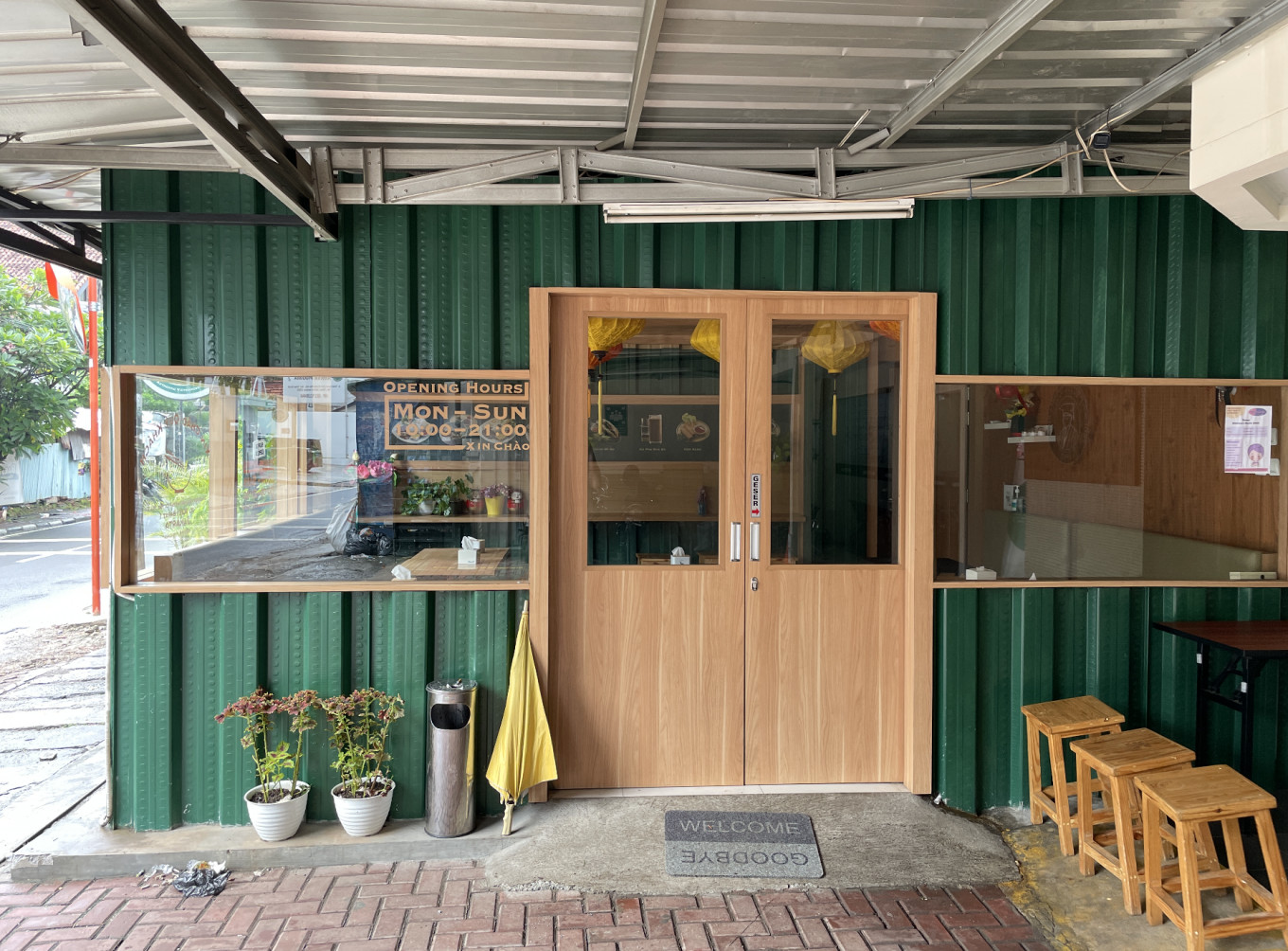Introducing Vietnam to Indonesians via Saigon street foods
Change text size
Gift Premium Articles
to Anyone

Chau Thi Phuong Thao, also known as Hien, brought the taste of her hometown to the streets of Jakarta.
At the heart of Tebet, South Jakarta, Hien, a fifty-year-old Vietnamese woman living in Jakarta, introduces Saigon to Indonesians at her humble restaurant. The small, green stall stands on the side of a narrow street, offering hearty comfort food for days rainy and sunny.
“I wanted more Indonesians to know the food of my culture, the one I grew up with,” Hien told The Jakarta Post in fluent Indonesian.
Saigon Street Food is the name of her restaurant. With this tiny establishment, she tried to introduce Vietnamese foods, specifically those from her hometown, Saigon (now known as Ho Chi Minh City). From spring rolls to the famous pho, from banh mi sandwich to che khoai mi, a dessert made from boiled cassava with coconut milk poured over it, she serves cuisine that is comforting for her.
“These are the foods I used to eat when I went to school in Saigon,” she recalls. “I named the restaurant Saigon Street Food because these are the foods sold on the streets if you go to Vietnam.”
When asked what the main characteristic of Vietnamese food is, Hien answered, without hesitation: health.
“We rarely fry our food. And Vietnamese cuisine also uses a lot of vegetables,” she said. “I think a lot of people can easily enjoy Vietnamese food. Especially during the rainy season, it [pho] can help us recover from the flu. It has vegetables and it is not greasy.”
Community-based gastro-diplomacy
People like Hien are the reason why we started to see Vietnamese restaurants begin to show up in Indonesia and globally. Having moved from her hometown to Jakarta in 1997, Hien has always wanted to introduce the food she loves to a new generation.
The Center for Gastrodiplomacy Studies cofounder at the University of Jember, Agus Trihartono, told the Post the Viet diaspora had contributed a lot to the country’s food’s popularity today.
“We can take it back to when there was a war in Vietnam. There was a mass migration of the Vietnamese to the United States, for example,” Agus explained. “At first, these Vietnamese were opening food stalls for themselves, for other Vietnamese who might be missing and feeling nostalgic for an authentic dish from their home country. Then, it grew in popularity, especially now that there’s an increasing trend for healthy food.”

Gastro-diplomacy, Agus said, was a way for a country to spread its cultural influence via its national food. While the government can organize it formally as part of its foreign policy, the diaspora often acts as those who start the mission, with no other aim but to feel at home abroad.
“Through gastro-diplomacy, we can tell the story of who we are,” according to Agus. “It is an effective way to introduce ourselves and shape how we want other countries to see us. Food can introduce who we are as a nation, our identity, how we utilize our natural resources and how we behave as a nation.”
Through the youngsters’ stomachs
“The recipe’s all mine. I did not change anything,” Hien answered when asked whether or not she has been adjusting her food to cater to Jakartans’ taste buds. “One thing we can find in a Vietnamese dish is Vietnamese fish sauce and vegetables: mint leaves, coriander leaves and Vietnamese basil. I used to have a Vietnamese basil plant in front of the restaurant, but then it died! Probably because a lot of the customers wanted to take it!”
Lucky for Hien, her customers still enjoy her food. The younger generation is one age group that seems to be very fond of Hien’s food. Another night when the Post was visiting her place, younger people lined up while her restaurant was full. They came with their partners or in groups, waiting patiently to try the food Hien grew up with.
Hien told the Post this sight differed from what she usually saw in bigger Vietnamese food establishments in Indonesia, especially those in shopping malls. According to her, Indonesians who enjoyed Vietnamese food were often older adults or had studied abroad. Yet, somehow, she could introduce the rich flavor of her pho, or the sweetness of the che khoai mi to a new generation.
“Most of the young people found out about my place from social media,” Hien said, and shared about the time an Instagram account, Dari Halte ke Halte (from one bus stop to another), had visited her restaurant. “They came, they ordered food, and we talked a little bit. I still remember where they sat. Then, I was told they put my restaurant and me on their account. Suddenly, more young people were coming here!”
Nearing the end of our conversation, the Post asked Hien for a photo. A simple gesture so that people who come to her place could meet and talk to her. Surprisingly, she said no.
“While I am happy to share my story, I don’t want people to know how I look,” she said. “I just want them to enjoy the food and my culture without having the hassle of finding out which one is me!”









